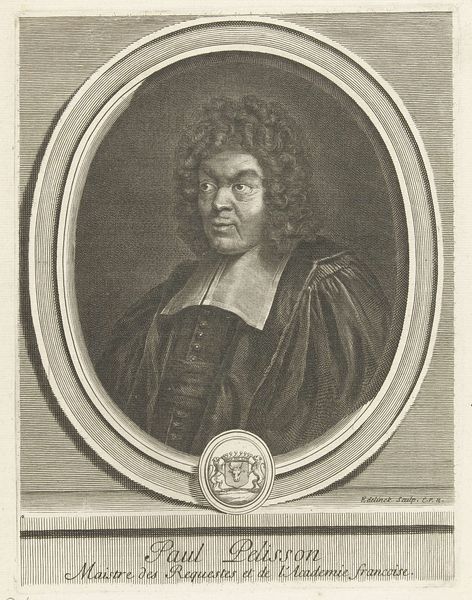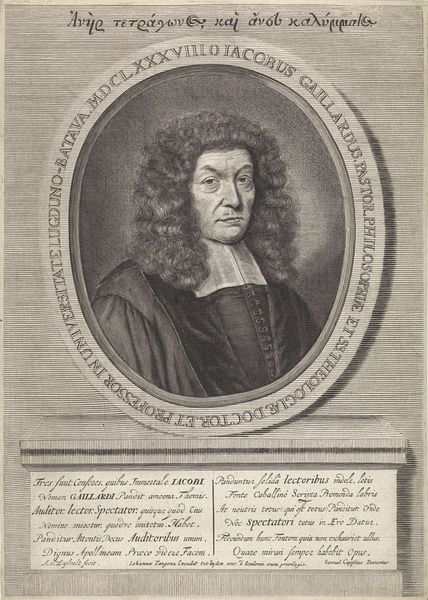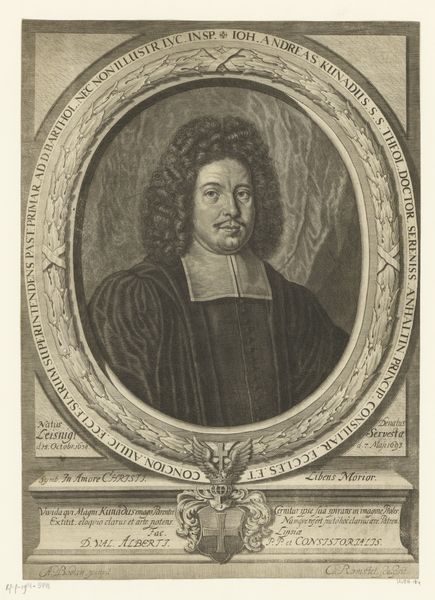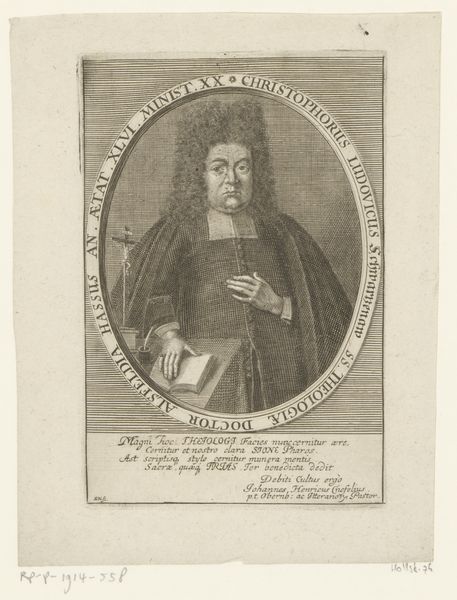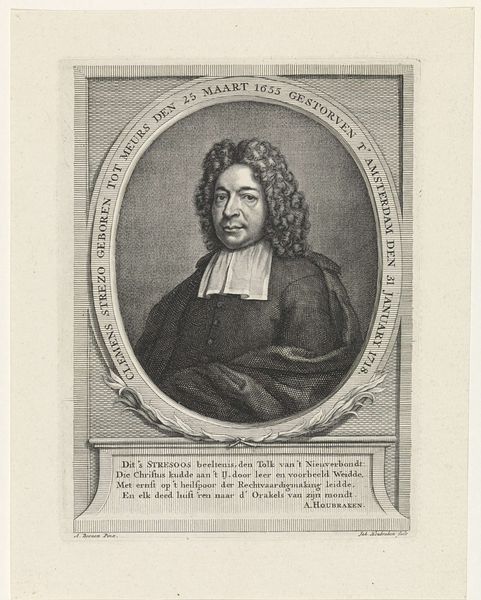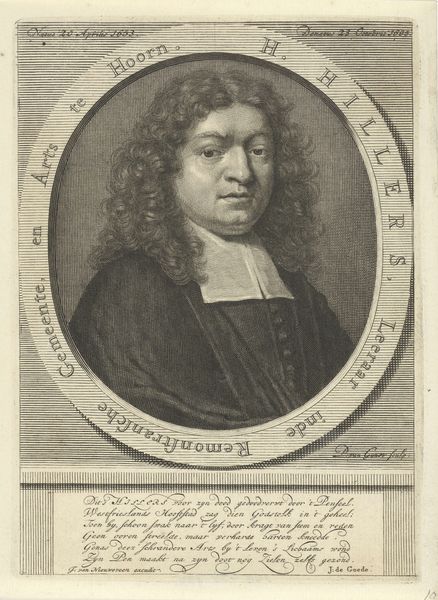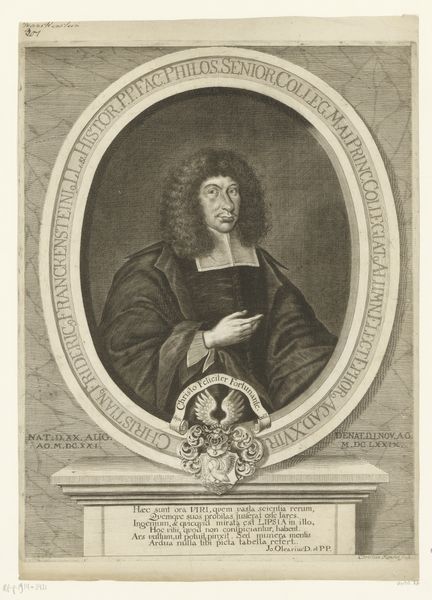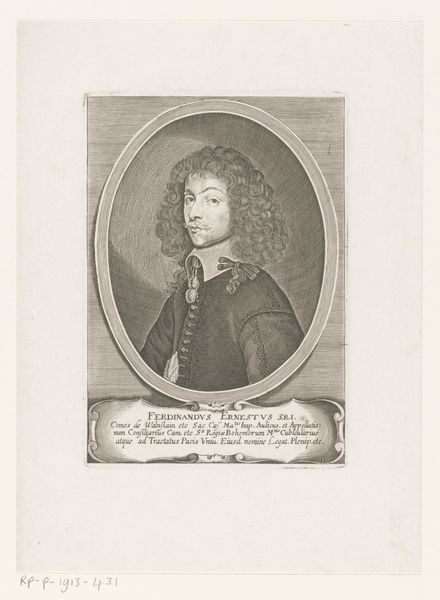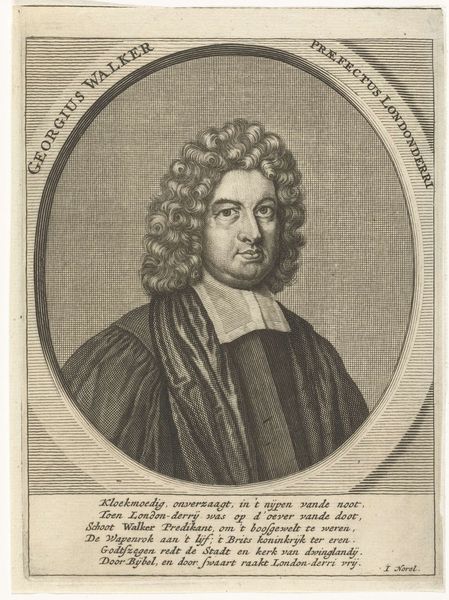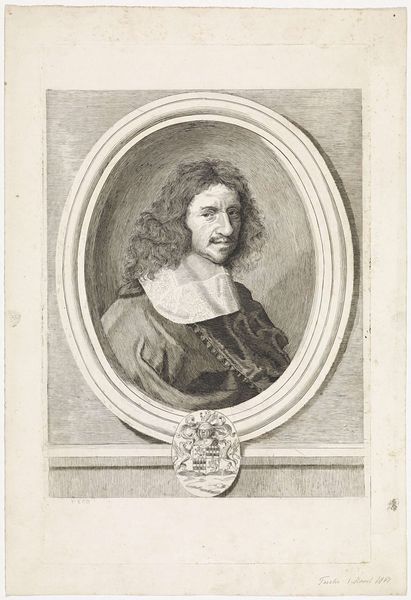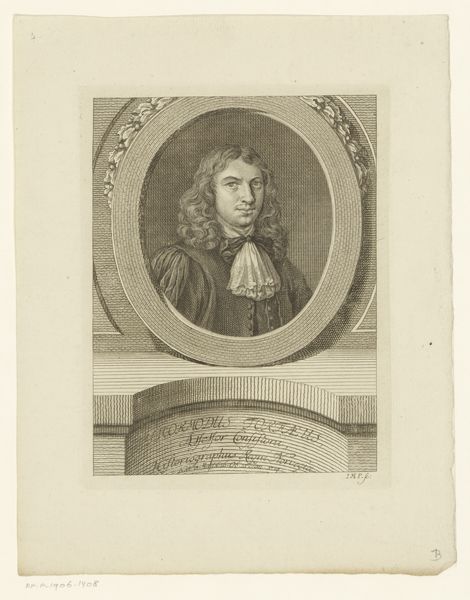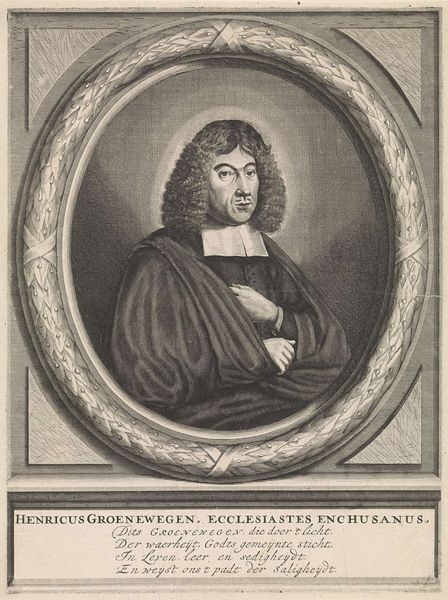
print, engraving
#
portrait
#
baroque
# print
#
old engraving style
#
history-painting
#
engraving
Dimensions: height 257 mm, width 192 mm
Copyright: Rijks Museum: Open Domain
This is a portrait of Paul Pelisson by Gérard Edelinck, likely made in the late 17th century, created using engraving, a printmaking technique. In engraving, an image is incised onto a metal plate, traditionally copper. The artist uses a tool called a burin to carve lines into the plate, creating grooves that will hold ink. The deeper the line, the more ink it holds, resulting in darker tones in the final print. The plate is then inked, and the surface wiped clean, leaving ink only in the incised lines. Damp paper is then pressed against the plate, transferring the ink to create the print. Edelinck's skill is evident in the fine detail and tonal range he achieves. This technique, demanding precision and control, highlights not only the artist's skill but also the social context of the time, where craft and artistry were highly valued, and prints like these played a crucial role in disseminating images and ideas. The labor-intensive process reflects a pre-industrial era, where skilled handwork was central to production. Recognizing the artistry and labor involved challenges conventional distinctions between fine art and craft.
Comments
No comments
Be the first to comment and join the conversation on the ultimate creative platform.
